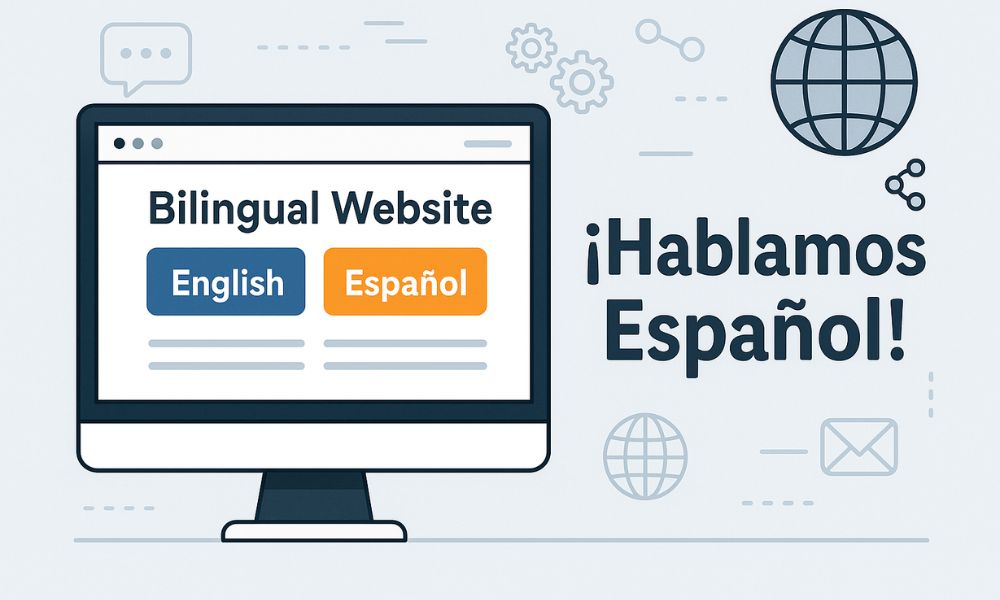
The Benefits of a Multilingual Website: Engaging Spanish-Speaking Clients to Maximize Outreach
In today’s globalized digital landscape, having a multilingual website is no longer just an option but a necessity for businesses aiming to maximize their outreach. A website that offers content in multiple languages, particularly Spanish, can significantly expand a business’s audience, enhance customer engagement, and drive growth.
As the Spanish-speaking population continues to grow, not only in the United States, but also in our own backyard of Lafayette and West Lafayette Indiana, offering a form of communication to this demographic through a multilingual website is a strategic move that can yield substantial benefits.
The Growing Spanish-Speaking Market
Spanish is the second most spoken language in the world by native speakers, with over 460 million people worldwide.
According to the U.S Census Bureau, the Spanish speaking population has more than doubled over the last couple decades, from 6.4% in the early 2000’s, to 15.2% since 2020.
This number is projected to increase, with estimates suggesting that the U.S. could become the largest Spanish-speaking country by 2050.
This highlights the significance of the Spanish-speaking market and the potential it holds for businesses that can communicate with this audience.
Maximizing Outreach Through Multilingual Content
One of the primary benefits of a multilingual website is the ability to reach a broader audience.
By offering content in Spanish, businesses can tap into a market that may otherwise be inaccessible due to language barriers.
A study by the Common Sense Advisory found that 72.4% of consumers are more likely to buy a product with information in their native language.
This underscores the importance of providing content that resonates with the target audience’s linguistic and cultural preferences.
Engaging Spanish-Speaking Clients
About 10% of households in Tippecanoe County report speaking Spanish as their primary language.
In addition to expanding reach, offering content in Spanish can lead to deeper engagement with Spanish-speaking clients and families.
Language is a powerful tool for building trust, rapport, and better communication with clients which can lead to higher levels of customer satisfaction and loyalty.
Numerous companies have successfully implemented multilingual websites and reaped the benefits.
For instance, Airbnb offers its platform in multiple languages, including Spanish, which has allowed the company to penetrate international markets effectively.
Similarly, Shopify provides multilingual support to help businesses cater to diverse audiences, resulting in increased global sales.
According to a study by CSA Research, 56.2% of consumers say that the ability to obtain information in their own language is more important than price.
This illustrates the critical role that language plays in consumer decision-making and the potential revenue loss for businesses that fail to offer multilingual support.
In conclusion, a multilingual website, particularly one that offers content in Spanish, is a powerful tool for maximizing outreach and engaging a larger audience.
By communicating with the growing Spanish-speaking market, businesses can increase their visibility, improve customer satisfaction, and drive significant growth into new markets.
The benefits of a multilingual website are clear: it not only broadens the reach of a business but also deepens its connection with a diverse and expanding customer base.
As the digital landscape continues to evolve, the importance of multilingual content will only become more pronounced, making it a crucial component of any successful business strategy.
-Juan Carlos
Horizon Media Management LLC

